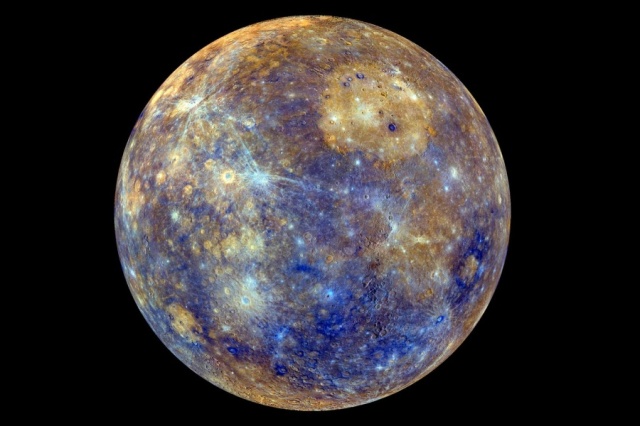 In our solar system, Mercury is the teeniest planet, and nestles closest to the sun. Understanding how Mercury developed as the solar system formed is an intriguing question for space science, and a surprising amount of information can be uncovered by analysing the topographical atlas of Mercury’s surface.
In our solar system, Mercury is the teeniest planet, and nestles closest to the sun. Understanding how Mercury developed as the solar system formed is an intriguing question for space science, and a surprising amount of information can be uncovered by analysing the topographical atlas of Mercury’s surface.
The Mariner 10 spacecraft, which launched in 1973, sent back photographs of just under half of Mercury’s surface. Now, American researchers have used images from the glossy, ultramodern MESSENGER spacecraft (launched in 2004) that visualise the entire surface to identify new landscape features that might help to explain more about Mercury’s history.
They found that the oldest areas of Mercury were pockmarked with huge craters (10 – 1,000 km wide) that hail from an intense period of history around 4 billion years ago known as the Late Heavy Bombardment. This was a time when huge fields of asteroids and comets travelled through space and cannoned into different planets of our solar system, including Mercury and the moon (interestingly, Earth doesn’t show much evidence from this period since active tectonic plates and erosion constantly resculpt the planet’s surface).
Then, around 3.8 billion years ago, several areas of Mercury’s terrain appear to have been smoothed out by intense volcanic activity extending across the planet, erasing evidence of past craters. Since such smoothened areas mostly peter out towards the end of the Late Heavy Bombardment period, these volcanoes were likely activated by the constant impact of asteroids and comets.
Paper: http://goo.gl/PoHep
Marchi S, Chapman CR, Fassett CI, Head JW, Bottke WF, & Strom RG (2013). Global resurfacing of Mercury 4.0-4.1 billion years ago by heavy bombardment and volcanism. Nature, 499 (7456), 59-61 PMID: 23823793




